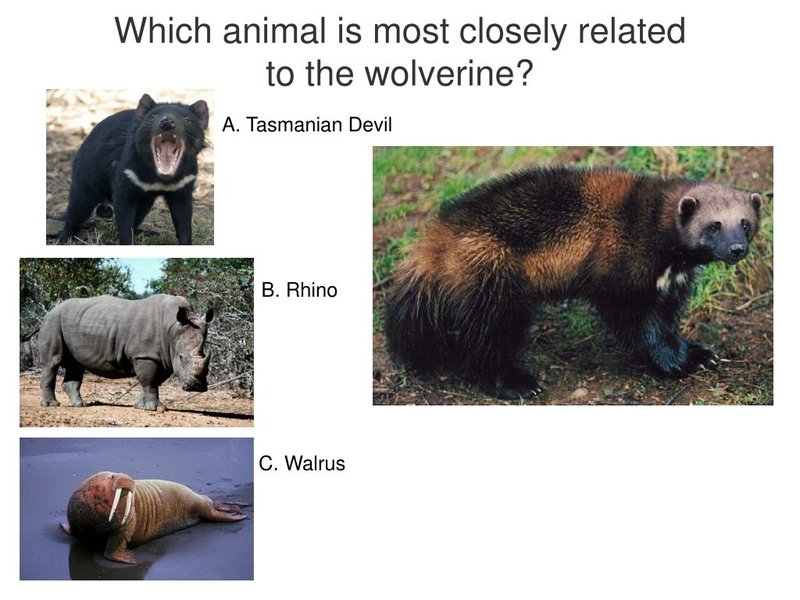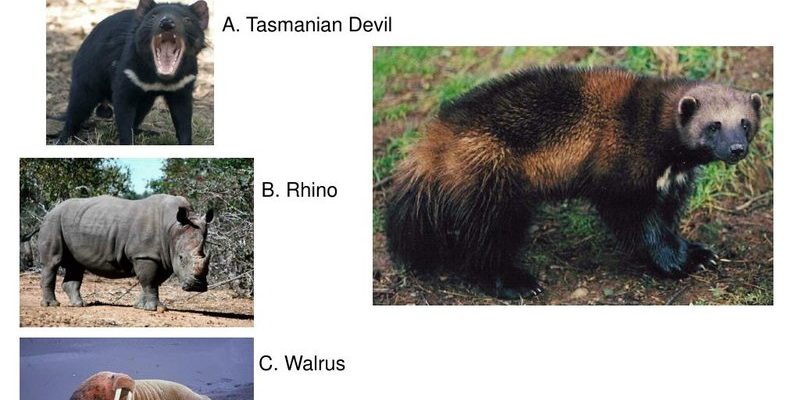
Wolverines are stocky, powerful creatures, often compared to a small bear or a large weasel. They roam cold northern regions, known for their strength and tenacity. But there are other animals out there, some closely related, and some not at all, that have their own unique traits. Each of these animals has a story to tell and a role to play in their ecosystem. So, pour yourself a cup of coffee, settle in, and let’s explore ten animals that remind us of the wolverine, highlighting the differences and similarities that make them special.
1. European Badger
The European badger is a fascinating creature. At first glance, you might notice similarities in body shape with the wolverine. Both have stout bodies and short legs, perfect for burrowing and scavenging. However, the badger sports distinct black and white stripes on its face, which can help you tell it apart from its fiercer cousin.
Badgers are primarily nocturnal, meaning they’re much more active during the night than during the day. They live in social groups called cete, which is different from the wolverine’s solitary lifestyle. If you think of the wolverine as a lone wolf (or, well, wolverine), the badger is more like a social butterfly of the animal kingdom.
2. Ferret
When you think of ferrets, you might envision playful little pets darting around your living room. They do share some traits with wolverines, particularly their long, slender bodies and carnivorous diets. But ferrets are significantly smaller, typically weighing only about 1-3 pounds compared to a wolverine’s hefty 20-55 pounds.
Unlike the wolverine, ferrets are domesticated and often kept as pets. They have a playful nature and enjoy social interaction. So, while a wolverine might be more of a rugged introvert, a ferret is all about making friends and having fun.
3. Otter
Otters are playful creatures often found in rivers and lakes. Much like wolverines, they are also part of the weasel family, but their lifestyle is quite different. Otters are semi-aquatic, adept at swimming and diving for fish, while wolverines prefer terrestrial habitats in colder climates.
One key thing to look for is the otter’s sleek, streamlined body and webbed feet, perfect for gliding through water. In contrast, the wolverine has a more robust and lumbering build, suited for traversing rugged terrains. Think of otters as the water-loving cousins of wolverines!
4. Marten
Martens are small, agile mammals that resemble a cross between a cat and a weasel. Like wolverines, martens are skilled climbers and can often be found in forests. They have a long body and a bushy tail, which makes them look somewhat similar at first glance.
However, martens are much smaller, ranging only from 1.5 to 3.5 pounds. Their fur is often a rich, golden-brown, which sets them apart from the wolverine’s darker, more rugged coat. If the wolverine is a robust warrior of the wild, the marten is like a nimble acrobat, darting through the trees with grace.
5. Fisher
The fisher, another member of the weasel family, is often mistaken for a wolverine due to its size and stockiness. However, fishers are notably smaller, weighing between 4-13 pounds. Their fur is a dark brown, similar to that of a wolverine, making them a bit of a lookalike.
Fishers are known for their remarkable hunting skills, primarily preying on porcupines. They’re agile and fast, which is a bit different from the wolverine’s more brute force approach to hunting. So while the two may share a resemblance, their hunting styles certainly set them apart.
6. Lynx
Lynxes are fascinating felines that share the wild habitat of the wolverine, often found in snowy regions. Both animals have a stocky build, but lynxes are more cat-like and have those adorable tufts of fur on their ears. Plus, their long legs and large feet help them walk on snow, something wolverines also excel in.
However, lynxes are more solitary hunters, relying on stealth to take down prey like hares. They also have a softer coat that varies in color, ranging from grey to light brown, while the wolverine has a coarser, darker fur. So, if you’re out in the wild and spot a lynx, just remember: it’s a different kind of fierce than a wolverine.
7. Cheetah
You might be surprised to find the cheetah on this list. While they’re not closely related, both share a strong physique. The wolverine has a stocky build, while the cheetah is lean and streamlined, built for speed. They’re both fierce predators in their own right, with the wolverine known for its strength and the cheetah famed for its unmatched sprinting ability.
What sets them apart is their hunting strategy. Wolverines often rely on brute strength and scavenging, while cheetahs use their incredible speed to chase down prey. Think of it this way: if the wolverine is the heavyweight champion of the forest, the cheetah is the fastest runner on the savannah.
8. River Otter
Though we’ve touched on otters, it’s worth distinguishing the river otter from other species. River otters thrive in freshwater environments and are exceptionally social, often seen playing together. They have a sleek, streamlined shape, excellent for swimming, and can hold their breath underwater.
While wolverines prefer solid ground and dense forests, river otters are all about that water life. Their playful antics and friendly nature starkly contrast with the wolverine’s more solitary, rugged demeanor. If you come across one, you might even think of it as the cheerful cousin of the serious wolverine.
9. North American Itself
The North American marten is another close relative and looks a lot like the wolverine at first glance. Both share a similar habitat and are part of the same family of mustelids. However, martens are significantly smaller, which is one of the easiest ways to tell them apart.
Martens are agile, spending much of their time in trees, while wolverines prefer to be on the ground, using their strength to cover large areas. If you ever get the chance to see both in the wild, you’ll notice that one is a tiny, agile creature, while the other is a robust survivor of harsh climates.
10. American Black Bear
Last but not least, we have the American black bear. While it’s a stretch to compare a bear to a wolverine, their habitats sometimes overlap, and they share a few similar features, like stout builds. However, black bears are much larger, weighing between 100-600 pounds, compared to a wolverine’s more modest size.
Bears are omnivores, while wolverines are primarily carnivorous scavengers. If you were to encounter a bear, you’d quickly realize that while both are powerful animals, their shapes and behaviors tell very different stories.
As we’ve explored, the world is full of animals that share similarities with the wolverine, each with its unique characteristics and behaviors. From the social badger to the agile marten, there’s a fascinating diversity out there. Whether it’s their size, diet, or habitat, understanding these distinctions helps us appreciate the beauty of wildlife.
The next time you find yourself in a conversation about wolverines, you can impress your friends with your knowledge of their lookalikes. And who knows? You might even discover a newfound favorite among these intriguing animals! So, keep your eyes peeled—nature is full of surprises just waiting to be uncovered.

